
POST-CRISIS RISK MANAGEMENT: BRACING FOR THE NEXT PERFECT STORM
Tsuyoshi Oyama, an experienced risk management professional, has produced a valuable and insightful examination of the causes of the global financial crisis, the initial public sector responses to …
- Edition
- -
- Call Number
- 330.9 OYA p
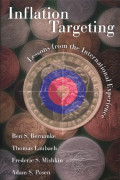
INFLATION TARGETING: LESSON FROM THE INTERNATIONAL EXPERIENCE
How should governments and central banks use monetary policy to create a healthy economy? Traditionally, policymakers have used such strategies as controlling the growth of the money supply or pegg…
- Edition
- -
- Call Number
- 332.41 BER i
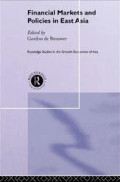
FINANCIAL MARKETS AND POLICIES IN EAST ASIA
This book assesses the need to secure policy consistency, the scope for inflation targeting, the sustainability of exchange rate regimes and the scope for deeper financial integration in the Austra…
- Edition
- -
- Call Number
- 332.095 BRO f
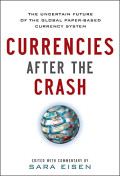
CURRENCIES AFTER THE CRASH: THE UNCERTAIN FUTURE OF THE GLOBAL PAPER-BASED CU…
From the brightest minds in the field―a revealing look at how countries use their currencies to achieve prosperity . . . and the coming repercussions Bloomberg Television's Sara Eisen sheds li…
- Edition
- -
- Call Number
- 332.4044 EIS c

THE EXCHANGE RATE IN A BEHAVIORAL FINANCE FRAMEWORK
This book provides an alternative view of the workings of foreign exchange markets. The authors' modeling approach is based on the idea that agents use simple forecasting rules and switch to t…
- Edition
- -
- Call Number
- 332.4 GRA e
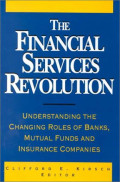
THE FINANCIAL SERVICES REVOLUTION: UNDERSTANDING THE CHANGING ROLES OF BANKS,…
Reviews the major issues challenging the current regulatory environment. The text analyzes banks and insurance companies moving away from their traditional business operations to enter into investm…
- Edition
- -
- Call Number
- 332.1097 KIR f
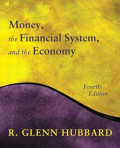
MONEY, THE FINANCIAL SYSTEM, AND THE ECONOMY: INTERNATIONAL EDITION
Hubbard builds his text upon the idea that students must develop an economic understanding for organizing concepts and facts, evaluate current and historical events using economic analysis, and use…
- Edition
- 4th. ed.
- Call Number
- 332.1 HUB m 4th ie
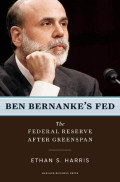
BEN BERNANKEN`S FED: THE FEDERAL RESERVE AFTER GREENSPAN
Ben Bernanke's swearing in as Federal Reserve chairman in 2006 marked the end of Alan Greenspan's long, legendary career. To date, the new chair has garnered mixed reviews. Business economists see …
- Edition
- -
- Call Number
- 332.1 HAR b
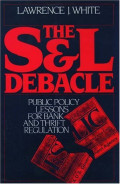
THE S&L DEBACLE: PUBLIC POLICY LESSONS FOR BANK AND THRIFT REGULATION
Many Americans have viewed the S&L crisis as the ultimate example of greed's pervasiveness in our society. Yet the personalities that have dominated the news have obscured the real issues behind th…
- Edition
- -
- Call Number
- 332.3209 WHI s
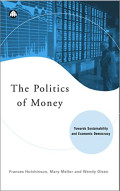
THE POLITICS OF MONEY: TOWARD SUSTAINABILITY AND ECONOMIC DEMOCRACY
Classical and radical economists have marginalised the role of money, most particularly the role of credit, in driving the machinery of accumulation and exclusion. Although critiques of capitalism …
- Edition
- -
- Call Number
- 332.46 HUT p

 Computer Science, Information & General Works
Computer Science, Information & General Works  Philosophy & Psychology
Philosophy & Psychology  Religion
Religion  Social Sciences
Social Sciences  Language
Language  Pure Science
Pure Science  Applied Sciences
Applied Sciences  Art & Recreation
Art & Recreation  Literature
Literature  History & Geography
History & Geography